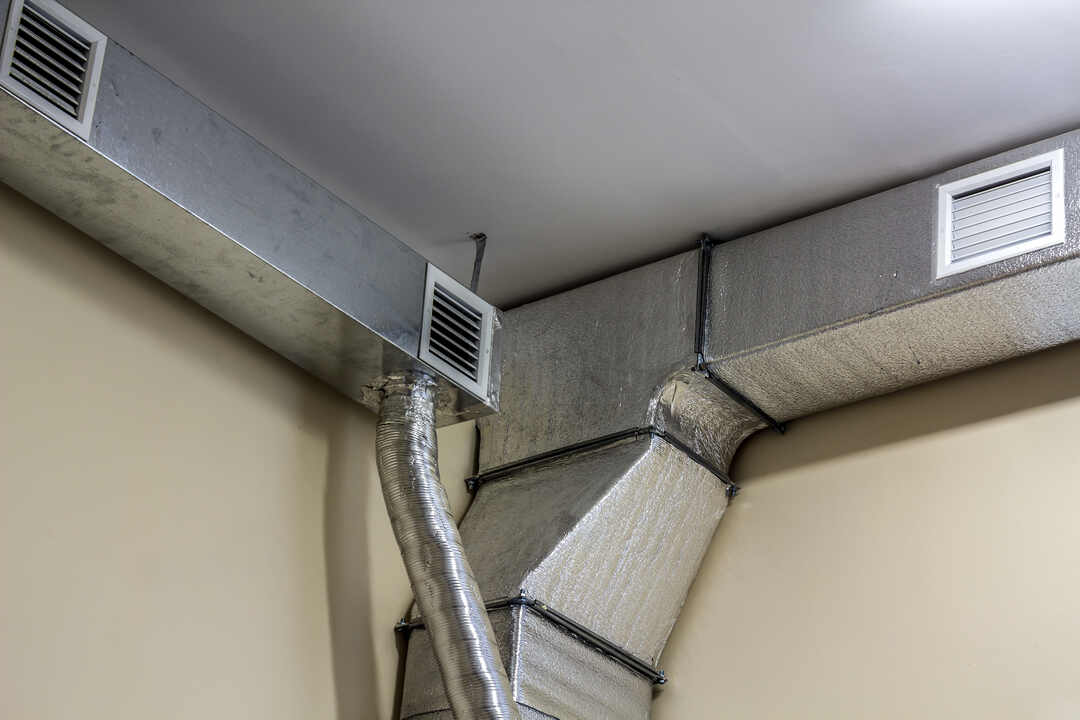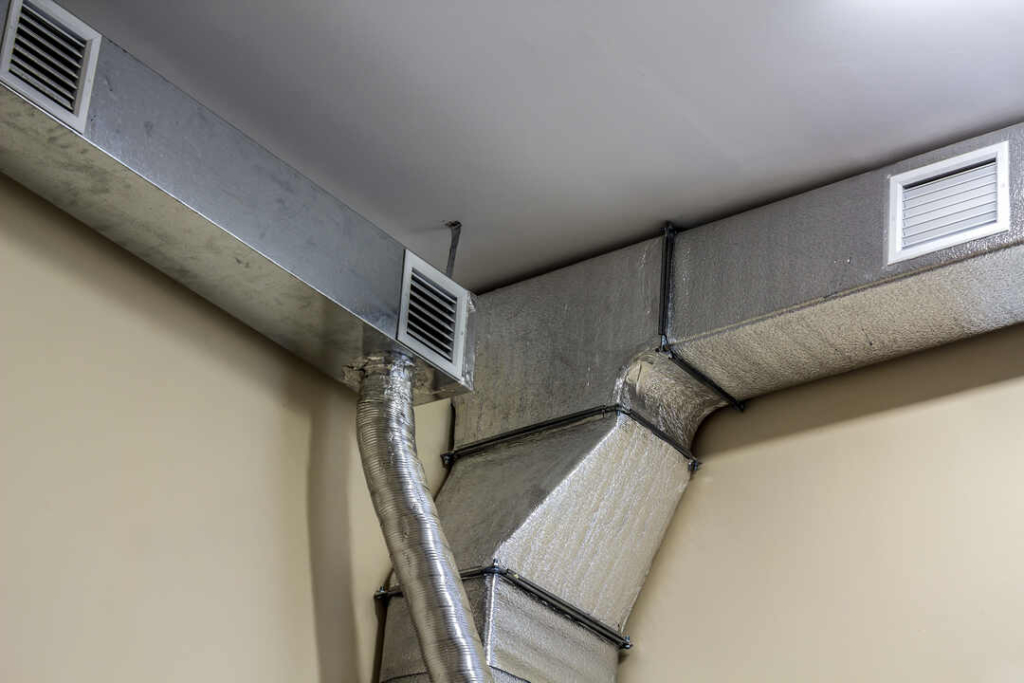
The Ultimate Guide to AC Deep Cleaning Dubai: A Step-by-Step Process

AC Deep Cleaning Dubai
Welcome to the Ultimate Guide to AC Deep Cleaning in Dubai! If you want to enhance the efficiency and lifespan of your AC unit, then you’ve come to the right place. In this comprehensive guide, we will take you through a step-by-step process of AC deep cleaning, ensuring your cooling system operates at its peak performance.
Dubai’s scorching heat can put extra strain on your AC, making regular maintenance essential. Neglecting your AC’s cleanliness can result in poor air quality, increased energy consumption, and even costly repairs. Fortunately, our expert guide will equip you with the knowledge and tools to tackle AC deep cleaning like a pro.
From removing dust and dirt to disinfecting and deodorizing, we will walk you through each stage of the cleaning process. With our helpful tips and techniques, you can ensure your AC unit remains free from allergens, mold, and bacteria, providing clean and refreshing air for you and your loved ones.
So, if you’re ready to give your AC Deep Cleaning Dubai it deserves, let’s dive into this ultimate guide and transform your cooling experience in Dubai!
Importance of AC deep cleaning Dubai
Maintaining a clean and well-functioning AC system is crucial, especially in a hot and humid climate like Dubai. Regular deep cleaning not only ensures optimal performance but also improves indoor air quality. Over time, dust, dirt, and allergens accumulate within the AC unit, leading to reduced efficiency and potential health risks.
A dirty AC can harbor mold and bacteria, which can be harmful to your respiratory health. With AC Deep Cleaning Dubai, you remove these contaminants, promoting a healthier living environment. Additionally, a clean AC operates more efficiently, which translates to lower energy bills and reduced carbon footprint.
Signs that your AC needs deep cleaning
How do you know when it’s time to deep clean your AC? There are several telltale signs that indicate your cooling system requires attention. First and foremost, if you notice a decrease in cooling capacity or a drop in airflow, it’s likely that your AC is clogged with dirt and debris. (AC Deep Cleaning Dubai)
Another common sign is a foul odor emanating from the AC vents. This odor can be caused by mold or bacteria growth within the unit. If you or your family members experience frequent allergies or respiratory issues, a dirty AC may be the culprit. Regular deep cleaning can alleviate these problems and improve indoor air quality.
Understanding the step-by-step process of AC deep cleaning Dubai
Now that you understand the importance of deep cleaning your AC and recognize the signs that indicate it’s time for a thorough cleaning, let’s dive into the step-by-step process. Following these guidelines will ensure a comprehensive cleaning that maximizes the efficiency and lifespan of your AC unit.
Step 1: Preparing for AC deep cleaning
Before you begin deep cleaning your AC (AC Deep Cleaning Dubai), it’s essential to gather the necessary tools and take some precautions. Start by turning off the power supply to the AC unit to prevent any accidents. Next, gather a vacuum cleaner with a brush attachment, a soft brush, a spray bottle with a mild detergent solution, and a clean cloth.
Step 2: Disconnecting and cleaning the filters
The first step in deep cleaning your AC is to remove and clean the filters. Start by locating the filters, which are usually situated in the return air grille or the indoor unit. Carefully remove the filters, taking note of their position for reassembly later.
Using a vacuum cleaner with a brush attachment, gently clean the filters to remove any loose dust and debris. If the filters are heavily soiled, they may require a more thorough cleaning using a mild detergent solution. Rinse the filters with water and allow them to dry completely before reassembling.
Step 3: Cleaning the evaporator coil and condenser coil
The evaporator coil and condenser coil are crucial components of your AC unit, responsible for cooling and releasing heat respectively. Over time, these coils accumulate dirt and dust, hampering their efficiency. Cleaning these coils is a critical step in deep cleaning your AC.
Using a soft brush, carefully remove any visible dirt or debris from the coils. Take care not to damage the delicate fins of the coils. Once the loose dirt is cleared, use a mild detergent solution and a clean cloth to wipe down the coils thoroughly. Rinse with water and allow them to dry completely before proceeding.
Step 4: Cleaning the blower fan and motor
The blower fan and motor play a vital role in circulating cool air throughout your AC system. These components can accumulate dust and debris, leading to reduced airflow and efficiency. Cleaning the blower fan and motor is essential for maintaining optimal AC performance.
Start by disconnecting the fan and motor from the AC unit. Use a vacuum cleaner with a brush attachment to remove any loose dirt and debris from the fan blades and motor. For a more thorough cleaning, use a mild detergent solution and a clean cloth to wipe down the fan blades and motor. Rinse with water and allow them to dry completely.
Step 5: Cleaning the condensate drain line
The condensate drain line is responsible for removing excess moisture from your AC system. Over time, this drain line can become clogged with dirt and debris, leading to water leakage and potential damage to your AC unit. Cleaning the condensate drain line is crucial for preventing these issues.
Start by locating the condensate drain line, usually situated near the outdoor unit. Using a pipe cleaner or a thin brush, gently remove any visible dirt or debris from the drain line. Flush the drain line with water to ensure it is clear of any obstructions.
Step 6: Reassembling and testing the AC unit
Once all the individual components have been thoroughly cleaned and dried, it’s time to reassemble your AC unit. Carefully reattach the filters, blower fan, motor, and condensate drain line, ensuring everything is properly secured.
After reassembly, turn on the power supply to the AC unit and test its functionality. Check for any unusual noises, leaks, or airflow issues. If everything appears to be in order, congratulations! You have successfully deep cleaned your AC unit.
Step 1: Preparing for AC Duct Deep Cleaning
Deep cleaning your AC is a crucial part of regular maintenance, ensuring optimal performance and clean indoor air quality. However, deep cleaning alone is not enough to maintain a healthy AC system. Here are some additional maintenance tips to keep your AC in top condition:
- Regularly clean or replace the filters to prevent dust and debris buildup. (AC Deep Cleaning Dubai)
- Keep the surrounding area of the outdoor unit clear of obstructions to ensure proper airflow.
- Schedule professional maintenance at least once a year to address any potential issues and ensure optimal performance.
- Install a UV light system to prevent mold and bacteria growth within the AC unit.
By following these maintenance tips and regularly deep cleaning your AC, you can enjoy a cool and refreshing indoor environment all year round.
So, if you’re ready to give your AC the deep cleaning it deserves, let’s dive into this ultimate guide and transform your cooling experience in Dubai!
Step 2: Disconnecting and cleaning the filters
Before you start the deep cleaning process, it’s important to gather all the necessary tools and supplies. Here’s what you’ll need:
- Protective gear: To ensure your safety, wear gloves, goggles, and a mask to protect yourself from any harmful substances or chemicals.
- Cleaning solution: Prepare a mixture of mild detergent and water for cleaning the various components of your AC unit.
- Soft brush and cloth: Use a soft brush to remove dust and debris from the filters, coils, and other parts. A cloth can come in handy for wiping down surfaces.
- Screwdriver and pliers: You may need these tools to remove screws, fasteners, or any other parts that require disassembly.
- Vacuum cleaner: A vacuum cleaner with a brush attachment is ideal for removing loose dirt and debris from the AC unit.
- Fin comb: This tool is useful for straightening bent fins on the condenser coil.
- Coil cleaner: Depending on the condition of your coils, you may need a specialized coil cleaner to remove stubborn dirt or mold.
Now that you’re fully equipped, let’s move on to the next step: disconnecting and cleaning the filters.
Step 3: Cleaning the evaporator coil and condenser coil
The filters in your AC unit play a crucial role in maintaining clean and healthy air. Over time, these filters can become clogged with dust, dirt, and other pollutants, reducing their efficiency. Cleaning or replacing the filters regularly is essential for optimal performance. Here’s how to do it:
- Turn off the power: Before you start working on your AC unit, make sure to turn off the power to avoid any electrical accidents.
- Locate the filters: Depending on the type of AC unit you have, the filters may be located in the indoor unit or the return air vent. Consult the manufacturer’s manual if you’re unsure.
- Remove the filters: Carefully remove the filters from their housing. Take note of how they are positioned so that you can reinstall them correctly later.
- Clean the filters: If the filters are washable, gently rinse them under running water. Use a soft brush to remove any stubborn dirt or debris. Allow the filters to air dry completely before reinstalling them.
- Replace the filters: If your filters are not washable, it’s time to replace them. Make sure to use the correct size and type of filters recommended by the manufacturer.
- Reinstall the filters: Once the filters are clean or replaced, carefully reinstall them in their original position. Ensure they are securely in place before moving on to the next step.
Now that the filters are clean, let’s move on to the next step: cleaning the evaporator coil and condenser coil.
Step 4: Cleaning the blower fan and motor
The evaporator coil and condenser coil are vital components of your AC unit that require regular cleaning (AC Deep Cleaning Dubai) to maintain optimal performance. Over time, these coils can accumulate dirt, dust, and even mold, hindering their ability to cool the air effectively. Here’s how to clean them:
- Access the coils: Depending on the design of your AC unit, you may need to remove a panel or cover to access the coils. Refer to the manufacturer’s manual for guidance. (AC Deep Cleaning Dubai)
- Inspect the coils: Take a close look at the coils to identify any visible dirt, debris, or signs of mold. If you notice mold growth, it’s important to take extra precautions and use a specialized coil cleaner.
- Clean the coils: Using a soft brush or a fin comb, gently remove any loose dirt or debris from the coils. Be careful not to bend or damage the delicate fins.
- Apply the coil cleaner: If your coils are heavily soiled or have mold growth, apply a coil cleaner according to the manufacturer’s instructions. Allow the cleaner to sit for the recommended time to loosen the dirt and mold.
- Rinse the coils: After the cleaner has had time to work, rinse the coils thoroughly with water. Use a gentle stream of water to avoid damaging the coils.
- Allow the coils to dry: Once the coils are clean, allow them to air dry completely before reassembling the AC cleaning services in dubai unit. Make sure there is no moisture left on the coils to prevent mold growth or other issues.
Now that the coils are clean, let’s move on to the next step: cleaning the blower fan and motor.
Step 5: Cleaning the condensate drain line
The blower fan and motor are responsible for circulating the air throughout your AC system (AC Deep Cleaning Dubai). Over time, these components can accumulate dirt and debris, affecting their efficiency and performance. Here’s how to clean them:
- Locate the blower fan and motor: Depending on the design of your AC unit, the blower fan and motor may be accessible from the front or back of the unit. Refer to the manufacturer’s manual for guidance.
- Disconnect the power: Before you start cleaning the blower fan and motor, make sure to turn off the power to avoid any accidents.
- Remove the fan and motor housing: Using a screwdriver or pliers, carefully remove the screws or fasteners that secure the fan and motor housing. Take note of the order in which the parts are removed for easy reassembly.
- Clean the fan blades: Gently clean the fan blades using a soft brush or cloth. Remove any dust or dirt that has accumulated on the blades. Pay special attention to the edges and corners where dirt tends to accumulate. (AC Deep Cleaning Dubai United Arab Emirates)
- Clean the motor housing: Using a vacuum cleaner with a brush attachment, remove any loose dirt or debris from the motor housing. Be careful not to damage any delicate components.
- Reassemble the fan and motor: Once the fan blades and motor housing are clean, carefully reassemble the parts in the reverse order of removal. Make sure all screws or fasteners are securely tightened.
Now that the blower fan and motor are clean, let’s move on to the next step: cleaning the condensate drain line.
Step 6: Reassembling and testing the AC unit
The condensate drain line is responsible for removing the excess moisture from your AC unit. Over time, this drain line can become clogged with dirt, mold, or algae, leading to water leakage or even damage to your AC system. Here’s how to clean it:
- Locate the condensate drain line: The condensate drain line is usually located at the back of the indoor unit or near the condenser unit. Refer to the manufacturer’s manual for its exact location.
- Inspect the drain line: Check for any visible signs of blockage or clogging in the drain line. If you notice water leakage or slow drainage, it’s a clear indication that the drain line needs cleaning.
- Remove the blockage: Depending on the severity of the blockage, you can use a wet/dry vacuum, a long brush, or a specialized drain cleaning (AC Deep Cleaning Dubai) tool to remove the debris. Insert the tool carefully into the drain line and gently push or pull to dislodge the blockage.
- Flush the drain line: Once the blockage is removed, flush the drain line with water to ensure it’s clear of any remaining debris. You can use a garden hose or a bucket of water for this step.
- Test the drainage: After cleaning the drain line, turn on your AC unit and observe the drainage. Check for any signs of water leakage or slow drainage. If the issue persists, you may need to seek professional help or with professional AC Cleaning Company Dubai.
Now that the condensate drain line is clean, let’s move on to the next step: reassembling and testing the AC unit.
Final thoughts and maintenance tips for AC Deep Cleaning Dubai
After completing the cleaning process, it’s time to reassemble your AC unit and ensure everything is in proper working order. Here’s what you need to do:
- Reassemble the components: Carefully reassemble all the parts you removed during the cleaning process. Make sure all screws or fasteners are securely tightened.
- Inspect the connections: Double-check all the connections to ensure they are properly secured. Look for any loose wires or disconnected hoses.
- Turn on the power: Once everything is reassembled, turn on the power to your AC unit. Listen for any unusual sounds or vibrations that may indicate a problem.
- Test the cooling performance: Set your AC unit to the desired temperature and observe how quickly it cools the room. Check the airflow from the vents to ensure it’s strong and consistent.
- Monitor for any issues: Keep an eye on your AC unit for the next few days to ensure it’s operating smoothly. If you notice any issues, such as reduced cooling performance or unusual noises, it’s best to consult a professional technician.
Final thoughts and maintenance tips for a clean AC system:
Maintaining a clean and healthy AC system requires regular maintenance and AC Deep Cleaning Dubai. Here are some additional tips to keep your AC unit in top condition:
- Change or clean the filters every 1-2 months, depending on the manufacturer’s recommendations and the level of dust in your environment.
- Keep the area around the outdoor unit clear of debris, vegetation, or any obstructions that can hinder airflow.
- Schedule professional maintenance at least once a year to ensure your AC unit is thoroughly inspected and serviced.
- Consider installing a UV germicidal light in your AC unit to kill bacteria, mold, and other microorganisms.
- Use a dehumidifier in areas with high humidity to prevent moisture buildup in your AC system.
- Regularly clean the vents and grilles to prevent dust and dirt from entering the AC unit.
- Monitor the thermostat settings and adjust them according to your comfort and energy-saving preferences.
By following these maintenance tips and performing regular deep cleaning, you can ensure your AC unit operates efficiently, provides clean air, and lasts for years to come.
Remember, a clean AC system not only enhances your comfort but also contributes to a healthier living environment. So, don’t overlook the importance of deep cleaning your AC unit and enjoy the cool, refreshing air it provides in Dubai’s scorching heat.
Now that you have the ultimate guide to deep cleaning – Dubai, it’s time to put your newfound knowledge into action. Grab your tools, follow the step-by-step process, and transform your cooling experience today!



Leave a Reply